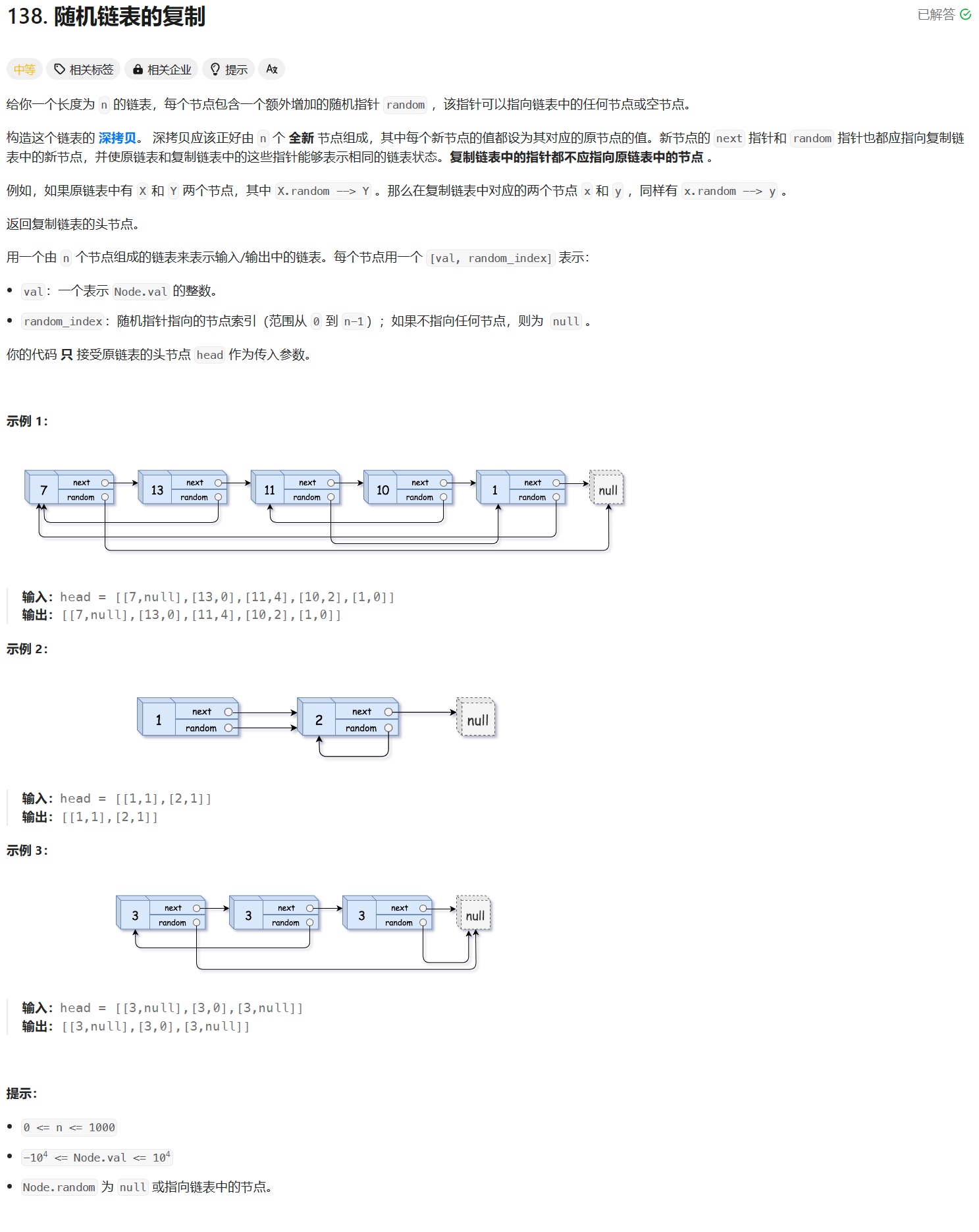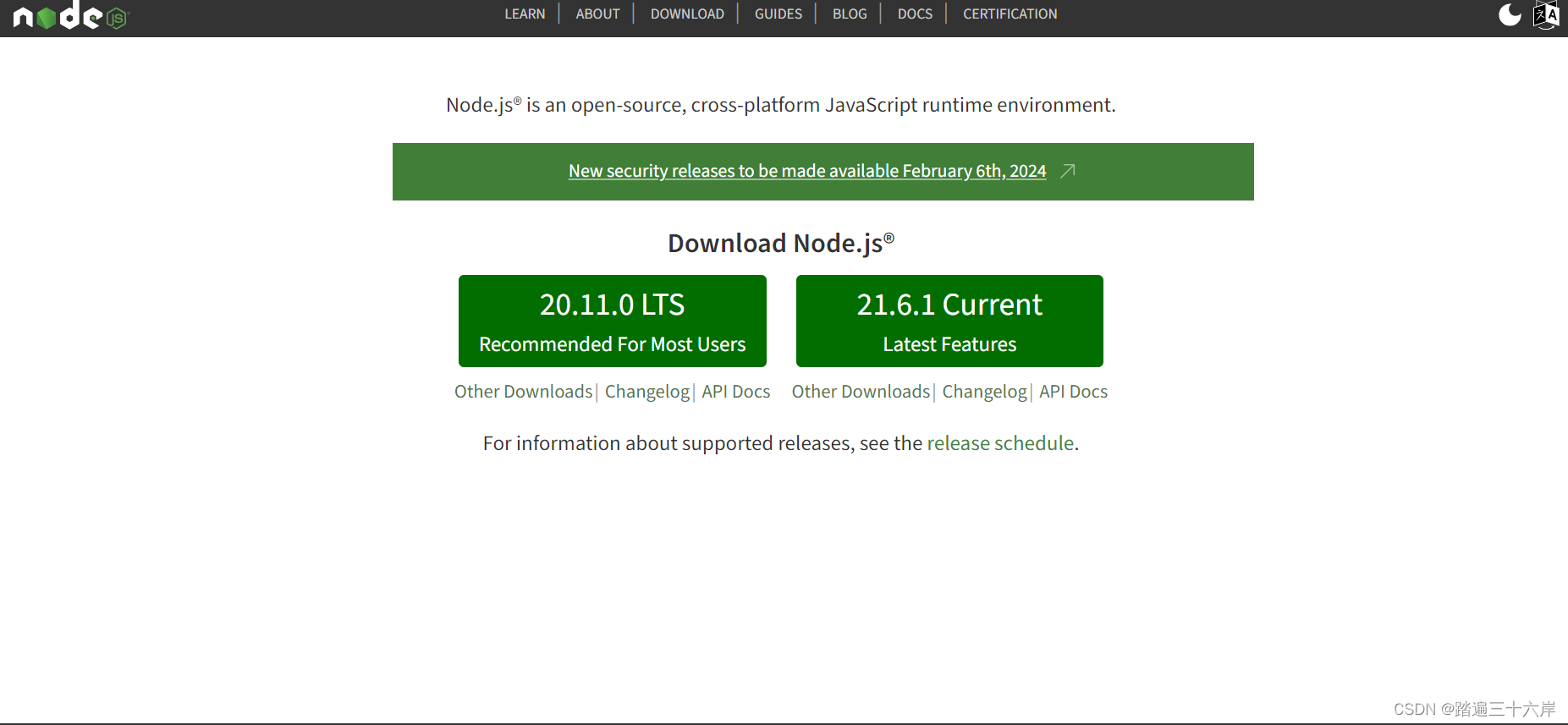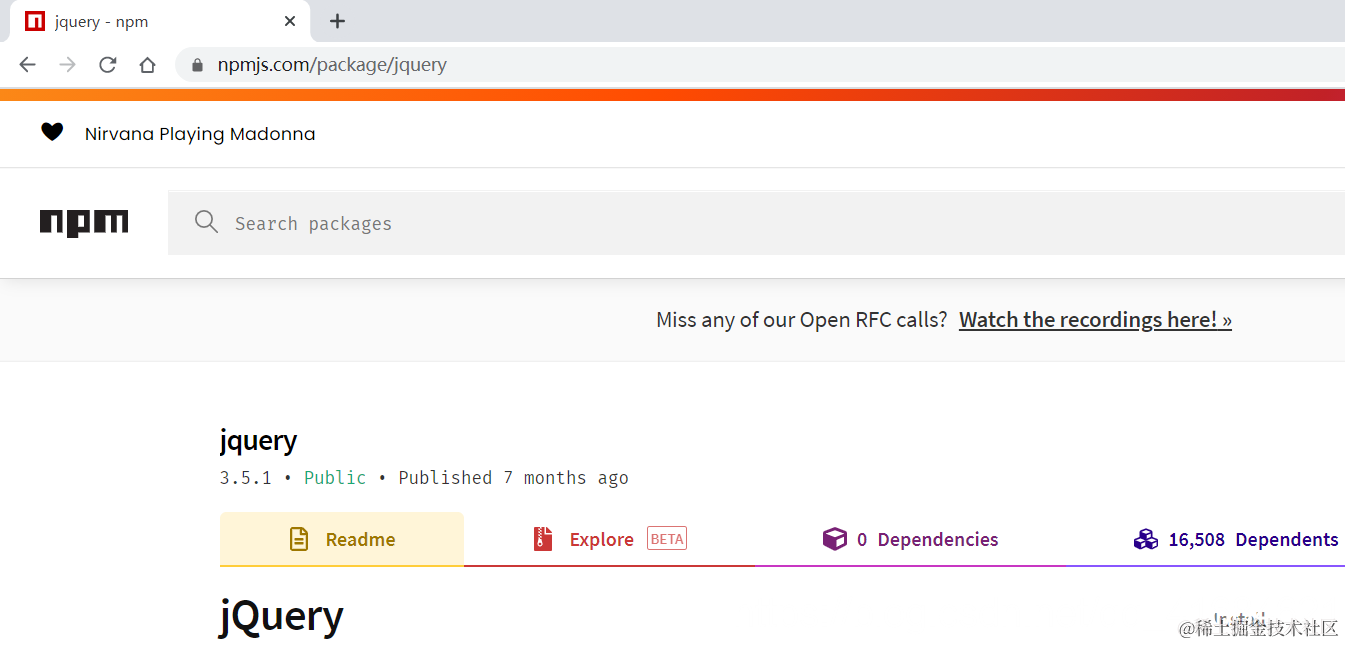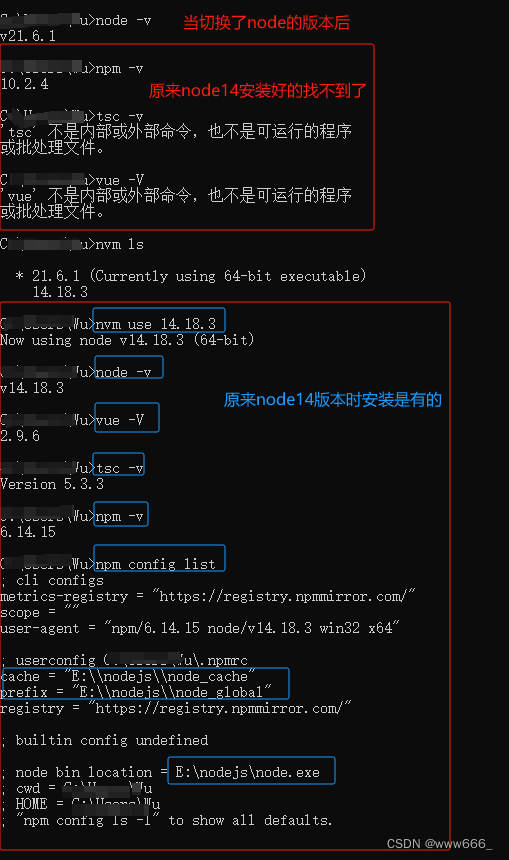本文介绍: 图解
Problem: 138. 随机链表的复制
💖 哈希表
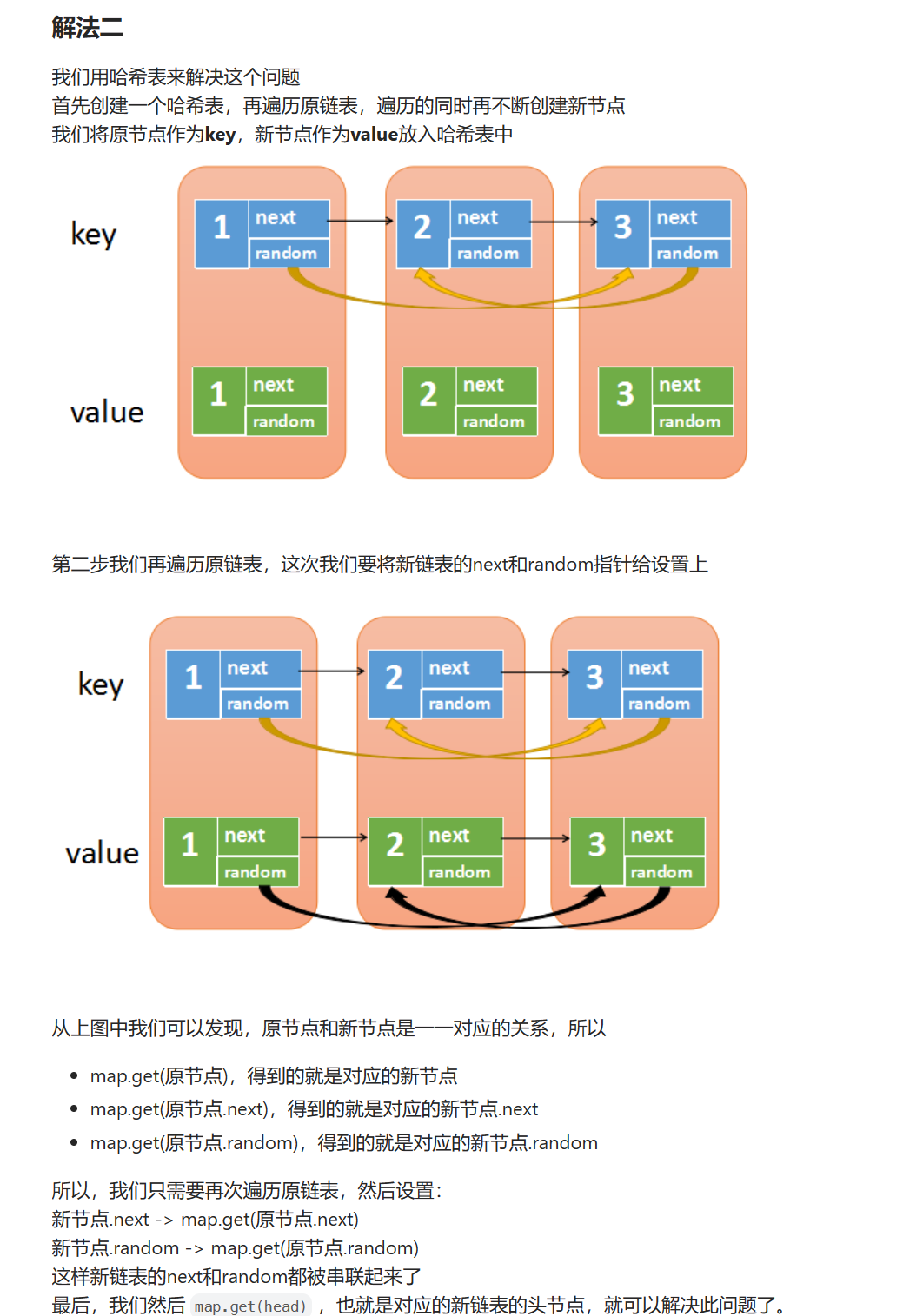
⏰ 时间复杂度:
O
(
n
)
O(n)
O(n)
🌎 空间复杂度:
O
(
n
)
O(n)
O(n)
/*
// Definition for a Node.
class Node {
int val;
Node next;
Node random;
public Node(int val) {
this.val = val;
this.next = null;
this.random = null;
}
}
*/
class Solution {
public Node copyRandomList(Node head)
{
Node cur = head;
//创建一个哈希表,key是原节点,value是新节点
Map<Node, Node> map = new HashMap<Node, Node>();
//将原节点和新节点放入哈希表中
while (cur != null)
{
Node node = new Node(cur.val);
map.put(cur, node);
cur = cur.next;
}
//遍历原链表,设置新节点的next和random
cur = head;
while (cur != null)
{
Node node = map.get(cur);//node 是新节点
Node next = map.get(cur.next);// next 是新节点的 next 节点
Node randonm = map.get(cur.random);// random 是新节点的 random 节点
node.next = next;
node.random = randonm;
cur = cur.next;
}
// 返回新的头结点
return map.get(head);
}
}
💖 拷贝分离法
⏰ 时间复杂度:
O
(
n
)
O(n)
O(n)
🌎 空间复杂度:
O
(
n
)
O(n)
O(n)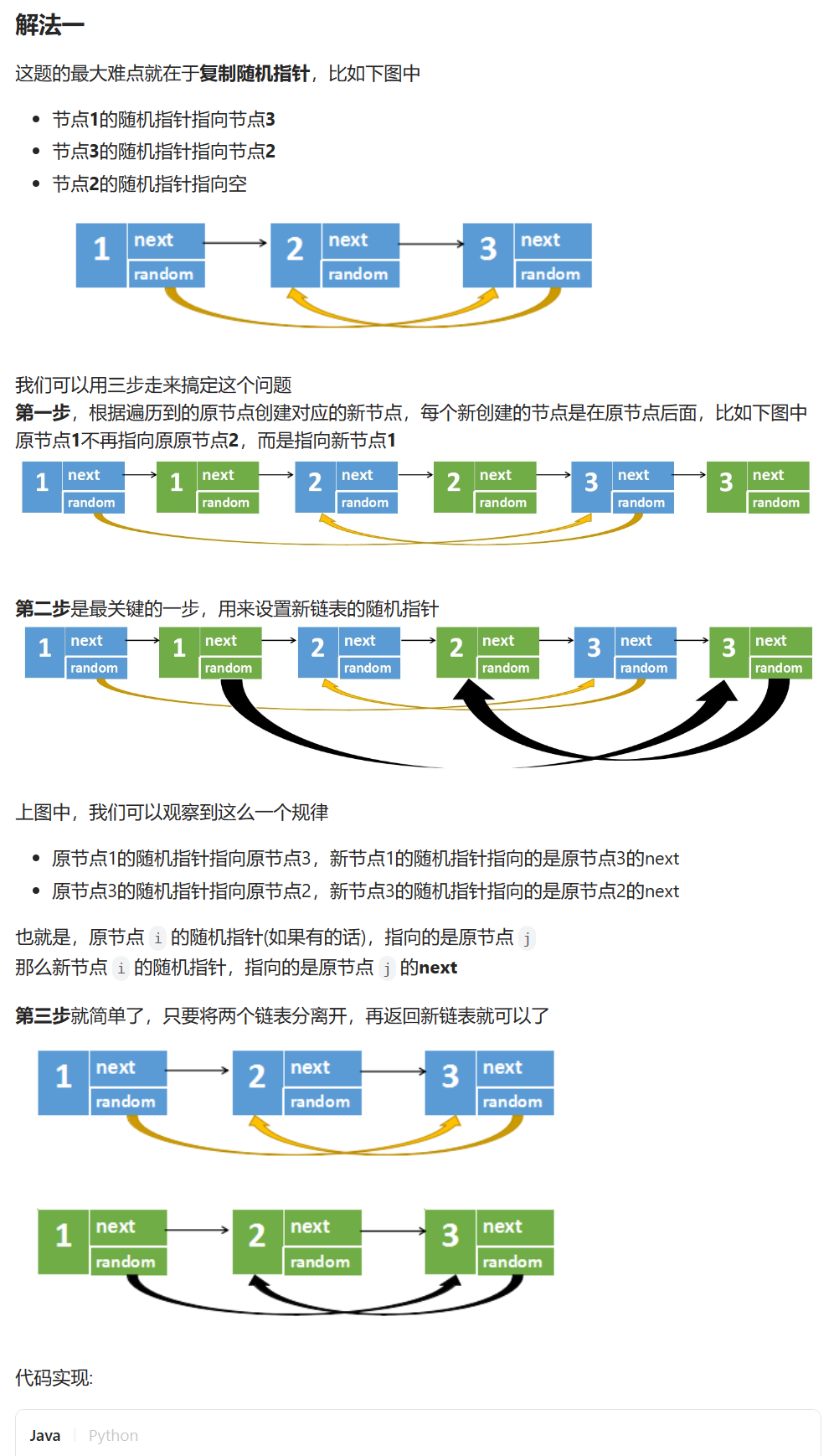
class Solution {
public Node copyRandomList(Node head) {
if(head==null) {
return null;
}
Node p = head;
//第一步,在每个原节点后面创建一个新节点
//1->1'->2->2'->3->3'
while(p!=null) {
Node newNode = new Node(p.val);
newNode.next = p.next;
p.next = newNode;
p = newNode.next;
}
p = head;
//第二步,设置新节点的随机节点
while(p!=null) {
if(p.random!=null) {
p.next.random = p.random.next;
}
p = p.next.next;
}
Node dummy = new Node(-1);
p = head;
Node cur = dummy;
//第三步,将两个链表分离
while(p!=null) {
cur.next = p.next;
cur = cur.next;
p.next = cur.next;
p = p.next;
}
return dummy.next;
}
}
原文地址:https://blog.csdn.net/lt6666678/article/details/135827249
本文来自互联网用户投稿,该文观点仅代表作者本人,不代表本站立场。本站仅提供信息存储空间服务,不拥有所有权,不承担相关法律责任。
如若转载,请注明出处:http://www.7code.cn/show_61409.html
如若内容造成侵权/违法违规/事实不符,请联系代码007邮箱:suwngjj01@126.com进行投诉反馈,一经查实,立即删除!
声明:本站所有文章,如无特殊说明或标注,均为本站原创发布。任何个人或组织,在未征得本站同意时,禁止复制、盗用、采集、发布本站内容到任何网站、书籍等各类媒体平台。如若本站内容侵犯了原著者的合法权益,可联系我们进行处理。

